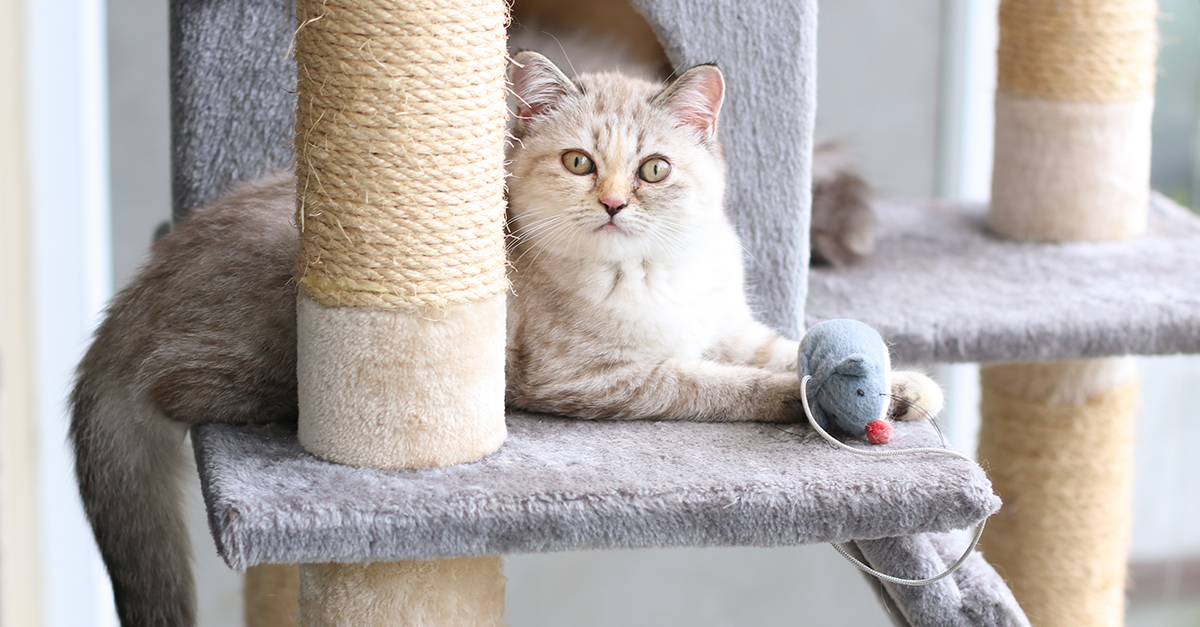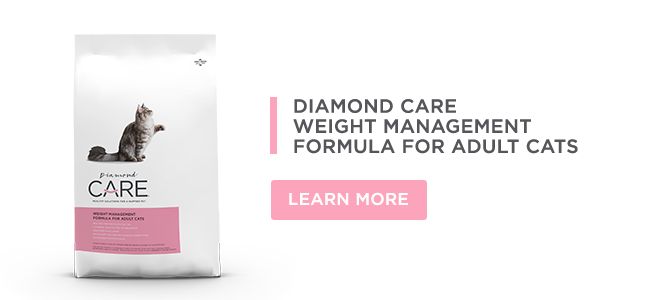In earlier times, cats were a part of the household less for companionship and more for their hunting prowess, to keep rodents from darting underfoot. Over the years, however, cats have become part of the family, and rarely need to pounce on prey for their dinners.
But that doesn’t mean they’ve lost their instinct to hunt. Which means you can use that predatory behavior to your advantage if, let’s say, your cat has become a little pudgy and could use more exercise.
Get your cat moving
Cats in the wild work for their food, taking down small prey several times a day. So, their natural feeding pattern is to eat several small meals throughout the day, instead of one or two big meals. Here are some tips to use that natural drive to help your cat become more physically and mentally active.
Dispense with the bowl — Measure out the amount of food you’d normally feed your cat in a day and divide it into seven or more portions. Then hide the kibble in different places in the house, even up on tabletops to encourage jumping, so your cat actively hunts for his or her dinner.
Find toys that mimic prey — Feathers on a wand can trick your cat into leaping for what looks like a bird. Stuffed mice toys, tossed across the room (or better yet, wind-up mice) will have your cat skittering across the floor. There are even flopping fish toys that will entice your cat to wrestle and bunny kick to stretch its muscles.
Put your cat through an obstacle course — A laser pointer can capture your cat’s attention by mimicking the furtive movements of prey. Put your cat through its paces by running the laser dot across the floor, up on the couch, down on the footstool and over the coffee table. (Cats that have trouble jumping may have painful arthritis or other health issues; so in that case, just keep the laser moving across the floor and talk to your veterinarian.)
Occasionally, offer your cat a kibble of food so it can feel the success of a “kill” and not feel frustrated by chasing the dot it never captures.
Train your cat to walk on a leash — Many cats can become accustomed to wearing a harness and going for a stroll outdoors. Just seeing the birds flitting through the trees may be enough to get your cat to strut their stuff and burn some calories.
Build an outdoor catio — A “cat patio” is an outdoor enclosure that gives your cat the advantages of being outdoors, but keeps them safe from cars, dogs, and predators. Placing a cat tree inside the catio will encourage your cat to climb and stretch while it watches the wildlife in your yard. (An indoor cat tree will offer the same benefits.)
If neighborhood cats wander through your yard, make sure your cat is vaccinated for contagious feline diseases in case it has nose-to-nose contact with other cats.
Feed your cat with interactive puzzles — These toys require your cat to manipulate the feeder with its paws to receive a piece of kibble. It changes mealtime from a sedentary event to an activity that challenges your cat physically and mentally. By only dispensing one morsel at a time, these feeders help cats eat more slowly, so they’re more likely to feel satiated before they eat the whole meal.
Of course, exercise is just one part of good weight management. Being careful not to overfeed or over-treat your cat is important, too. If you’re concerned about your cat’s weight, as always, talk to your veterinarian.
RELATED POST: NINE TOP CONTRIBUTORS TO OBESITY IN CATS








